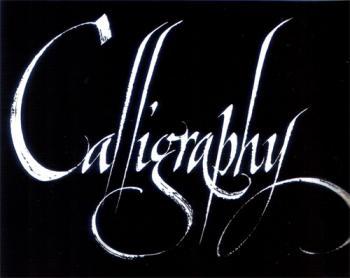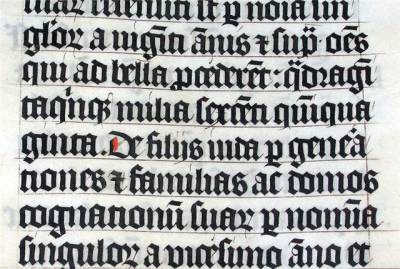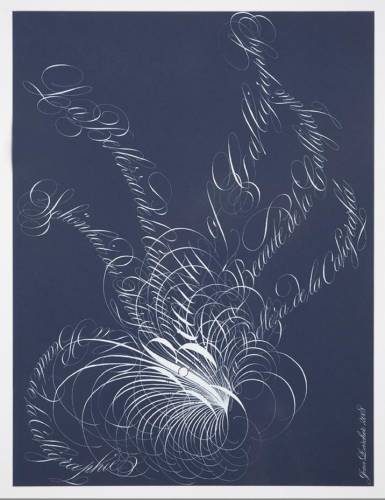According to http://www.essortment.com/all/calligraphyhist_reyt.htm  “Calligraphy – written beauty of feelings”...
Have you ever thought what calligraphy is? Is it just a way to write words neatly and accurately? Or may be, it's a kind of art that not everybody can practise? If you look this word up in a dictionary you will find the following definitions:
CALLIGRAPHY, Greek, art of neat handwriting, was widely used by the manuscript scribes before the book printing was invented (Brockhaus and Efron Encyclopedic Dictionary).
CALLIGRAPHY decorative handwriting or handwritten lettering (The New Oxford Dictionary of English). CALLIGRAPHY (the art of producing) beautiful writing, often created with a special pen or brush (Cambridge International Dicationary of English).
CALLIGRAPHY handwriting, esp beautiful handwriting considered as an art (Collins Dictionary).
So, calligraphy can be called “an art of writing”, "the art of giving form to signs in an expressive, harmonious and skillful manner".
To understand what calligraphy is one has to know the history of it, the history of writing.
The art of calligraphy finds its origins in cave paintings. Time was passing by and the art of drawing pictures became quite highly developed. About 3500 BC, the Egyptians created hieroglyphics for which they are so well-known. Some thousand years later, in 1000 BC, the Phoenicians developed what is believed to be one of the first alphabets and writing systems. They influenced the Greeks who later developed their own form of writing which by 850 BC the Romans had adapted to suit the Latin language.
Latin was the lingua franca of the churches of Europe in the Middle Ages. Since nothing could be more glorious than the word of God, the monks began to scribe ancient texts carefully into decorative books. Paper was expensive, so “scribing monks” developed a writing style that was narrower allowing more words to fit on a single line. This style is known as Gothic - a popular scribing technique of the Middle Ages.  By the mid 15th century, Johannes Gutenberg had invented the printing press. The printing press was too coarse for everyday letters, formal correspondence and invitations. So, they were handwritten. The art of calligraphy was flourishing.
By the 19th century the fountain pen has been invented. The rounded tip of these new pens made the special curves of calligraphy more difficult to write. The art might have seen its extinction but in the mid-19th century William Morris, British poet, “spearheaded” a calligraphic revival, elevating the act of writing to the art form of its past.
It might seem that the art of calligraphy couldn’t possibly withstand the competition from the 20th century’s most important invention – the computer. But calligraphy is flourishing more than ever with calligraphic societies throughout the United States and Europe.
Nowadays Western Calligraphy is practiced more and more widely and has gone far beyond the traditional boundaries of the past. It can be used for “utilitarian” purposes like invitations, advertisements, logos, quotations, awards, book jackets, calendars, family trees etc.  So, what makes the art of calligraphy so popular and appreciated nowadays? We all know that with the help of computer we can type a text in some minutes. But it takes a calligrapher a great deal of time to write only one letter. It's not only the matter of technique. It's the matter of what he or she intend to “transmit” in the manner of writing. “Calligraphy is at the same time the art of perfect handwriting and the art of perfect soul”... |












